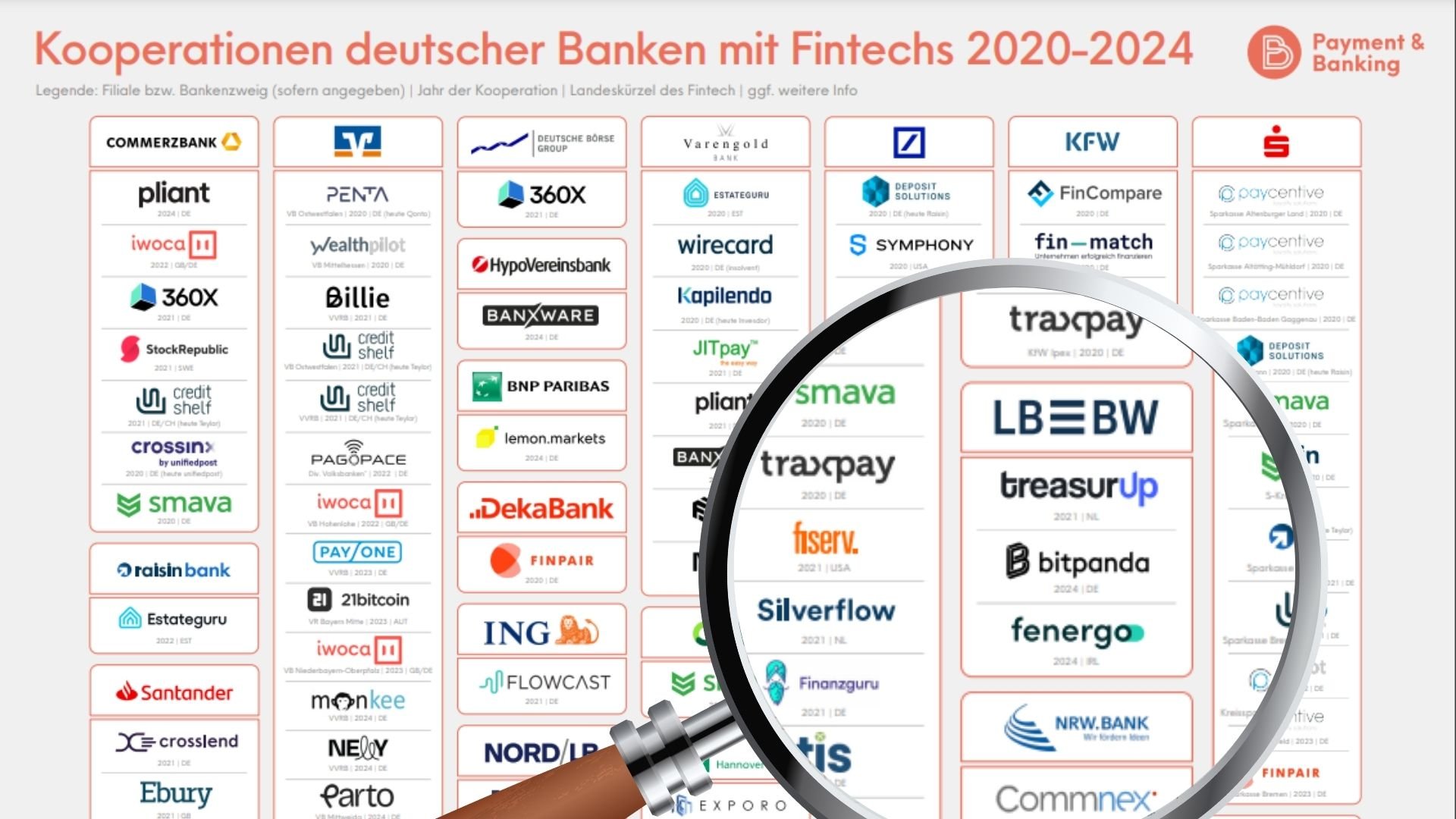Mit SUMUP steigt ein weiterer Anbieter von Zahlungsakzeptanz in das Geschäft der Herausgabe von Karten ein. Was hat das zu bedeuten?
Nachdem in den letzten Jahren der Netzbetrieb/Payment Service Provider und das Acquiring verschmolzen sind, sehen wir aktuell mehr und mehr Indikationen einer weiteren, gänzlich neuen Verschmelzung der Wertschöpfung im Payment. Das Issuing, also die Herausgabe von Karten wird eine weitere Komponente des Acquiring-Geschäftsmodells im Handel. Diese Entwicklung kann zu neuen weitreichenden Umwälzungen führen, wie wir sie schon mit der Konsolidierung in den letzten 10 Jahren sahen. SumUp ist nur der jüngste Zugang einer beeindruckenden Reihe innovativer Anbieter von Paymentlösungen im Handel.
Das sind Fakten, die heute schon zu erkennen sind:
- Heute kündigt SumUp (Anbieter von MPOS-Terminals, also jener mobilen Zahlungsterminals, die man von Taxen und KMUs (kleine/mittelständige Unternehmen) kennt, in Kooperation mit Mastercard an, dass sämtliche SumUp-Händler ab sofort in den Genuss einer Corporate MasterCard kommen
- Das eher unbekannte Start-up Vivawallet bietet heute schon 0 % Paymentgebühren, ja richtig gelesen, Paymentakzeptanz kostenlos, für KMU-Händler, wenn diese die Vivawallet Corporate Card für den Einkauf nutzten.
- PayPal hat Issuing mit Acquiring verbunden im KMU Bereich. Anders als in den USA wo die Debitkarte für Endkunden war, startete PayPal das Produkt in Europa explizit für KMUs
- Der hochinnovative und börsengelistete PSP Adyen macht mittlerweile auch schon Issuing
- Klarna ist in die Kartenherausgabe eingestiegen (bisher nur Endkundengeschäft)
- Wirecard hat schon immer (OK, seit Mitte der 2000er Jahre) ein Issuing-Geschäft neben der klassischen Zahlungsakzeptanz. Aber Wirecard hatte das Issuing immer anders gespielt: primär Prepaid.

Was passiert da aktuell? Der Versuch einer Einordnung und Erklärung
- Ist das alles wirklich nur reiner Zufall, das plötzlich, die ohnehin innovativen Paymentdienstleister für den Handel ins Issuing-Geschäft einsteigen und jetzt auch noch SumUp als Europas führender MPOS-Anbieter im KMU-Bereich? Oder fällt den Entscheidern auf der Akzeptanzseite schlicht nichts mehr ein hinsichtlich neuer Innovationen?
- Payment war/ ist Commodity und hart umkämpft – gerade bei den Gebühren der Zahlungsakzeptanz entscheiden wenige Basispunkte wer eine Ausschreibung gewinnt.
- Mit einem zusätzlichen Ertragspotential über die Interchange (im Corporate Card-Bereich ist Interchange-Welt noch in Ordnung und lukrativ hoch für die Kartenausgeber) kann der Akzeptanzdienstleister eine gänzlich neue, zusätzliche Einnahmequelle pro Merchant erschließen. Dieses Ertragspotential kann auf der Akzeptanzseite dann zur Quersubventierung genutzt werden und in einem hart umkämpften Preiswettbewerb auf der Akzeptanzseite kann diese Quersubventionierung über Gewinn vs Verlust der Akzeptanz entscheiden.
- Gerade KMUs haben traditionell Probleme “richtige“ Corporate-Kreditkarten von ihren Hausbanken zu erhalten. Also fallen die Angebote von SumUp, PayPal, Adyen und Co auf einen fruchtbaren Boden der Nachfrage bei ihren Kunden.
- Einfach mal laut denken und stark vereinfacht „back of an envelope“ berechnet: Der kleine Handy-Zubehör-Shop im Bahnhofsviertel Frankfurt kauft seine Ware aus China und bezahlt bisher mit Alipay oder Überweisung 100 % seines Beschaffungsvolumens. Er hat x % Marge y % Ops Kosten und z % Einkaufskosten. Lassen wir „z“, also die Einkaufskosten bei ca. 50 % sein. Wenn theoretisch dieses z.B. über eine solche Corporate Card vom Paymentdienstleister geht, verdient dieser z.B. 165 bps Interchange plus ggf. FX/Fremdwährungsgebühren aus dem kompletten Einkauf über die Corporate Card des KMUs. Umgerechnet auf den kompletten Umsatz bedeutet das, dass pro umgesetzten Euro „verdient“ der Acquirer über den Einkauf (Interchangeertrag) 82.5 Basispunkte also 165 geteilt durch 2. Sind die eigentlichen Paymentkosten dann auf Debitkartenniveau also z. B. 20bps Gebühren plus 10bps Processing, so kann der Acquirer/PSP Payment für 0 anbieten und verdient noch 50pbs! Wenn dann noch Fremdwährungserträge oder Auslandseinsatzentgelt dazu kommt, wird das ein sehr schönes Geschäft für den Paymentdienstleister!
Wenn man das mal strategisch weiter denkt: Welche Konsequenzen hat diese Entwicklung auf den Payment-Markt und die bestehenden Spiele im Markt?
- Wie entwickeln sich die Paymentkosten im Handel? Kommt darüber Zero-Payment wie z.B. bei Vivawallet?
- Welchen Einfluss hat diese Entwicklung auf die Hausbank des KMUs, die klassisch aus dem Triumvirat Sparkassen-Finanzgruppe, VR-Bankgruppe und Postbank besteht? Zumal genau diese Banken im KMU-Bereich eigene Payment-Akzeptanzlösungen über eigene Tochtergesellschaften bieten. Wie kompetitiv werden diese Angebote in Zukunft noch sein?
- Wie entwickelt sich die Rolle des Procurements? Vermutlich sind diese Entwicklungen bis auf Weiteres auf das Segment der KMUs beschränkt und nicht denkbar in größeren Einkaufsorganisationen wie Aldi, Lidl und Co. Deren Zulieferer würden sich vermutlich bedanken, wenn Sie demnächst nur noch über (teure) Kartenakzeptanz bezahlt würden.
- Wie gestaltet sich die zukünftige Rolle von den verbliebenen Netzbetreibern/PSPs, die nicht mal das Acquiring-Geschäft haben?
- Was ist die zukünftige Rolle der aus den Bankengruppen „weg verkauften“ Acquirern, die heute kein Issuing-Geschäft haben, zumal der Erhalt einer Issuing-Lizenz viel komplexer und kostenintensiver ist als eine vergleichbare Acquiring-Lizenz?
- Welche Rolle hat diese Entwicklung für Mastercard und VISA im B2B Payment? Können sie damit im KMU-Bereich Marktanteile vom Rechnungs-/überweisungsbasierten B2B Payment der Swift-Banken gewinnen?
- Werden die großen B2B Plattformen/Marktplätzen wie Ariba/Coupa/Amazon B2B/Tradeshift auf den Zug aufspringen und auch Karten anbieten?
- Welche Rolle und Marktanteil gibt es für spezialisierte B2B Corporate/Travelcardanbieter wie Amex/Airplus wenn die KMUs die Corporate-Karten von SumUp, Paypal und Co verwenden z. B. zur Reisebuchung?
- Ist eine solche Karte nur das Einfallstor für ein breiteres Kreditangebot gänzlich neuer Anbieter? PayPal, Amazon, Klarna und Co bieten ja längst B2B Kreditlinien für ihre kleinen Corporate-Kunden an.
- Wird der Netzbetreiber/Acquirer/MPos Anbieter gar mittelfristig die „neue“ Hausbank des Händlers?
Was denken andere Payment & Banking Autoren darüber?
Kilian Thalhammer
Das Thema “Issuing“ und “Acquiring“ als „Kombination“ muss man aus Payment Anbieter Sicht differenziert betrachten. Einerseits ist es einfach eine logische Erweiterung. Die meisten Anbieter haben eine „Principal membership“ und damit die Lizenz von Visa/MC „sowieso“. Parallel dazu (auch wenn es der ein oder andere Issuing/Acquiring Spezialist nicht hören möchte) die Welten/Produkte nicht so weit auseinander. Wenn man im Acquiring ist, wird man Issuing auch bereitstellen können (ob man es verkauft bekommt, ist eine andere Frage). Der erste offensichtliche Link ist im B2B Bereich – hier überschneiden sich die Zielgruppen (Händler) und damit ergeben sich daraus offensichtliche Synergien (Auszahlung auf eine Karte, nicht Konto – Möglichkeit Loans zu vergeben etc.). Komplexer wird es im B2C Kontext – dort sind die Synergien „überschaubar“ und erst mit entsprechendem Volumen und „On – Us“ Fantasien zu heben (auf dem Weg zur eigenen Zahlart). Nur wenige können das wirklich ernsthaft erreichen.

Das Companies aus dem B2C Kontext (Klarna, PayPal) auch Karten herausgeben ist aus einer anderen Motivation zu erklären. Es erweitert die Customer Journey und den Reach. Diese Motivation darf man nicht mit Ansätzen von B2B Playern wie SumUp, Adyen oder Wirecard verwechseln.
In Summe – im B2B Kontext v.a. im Bereich SME/KMU macht es Sinn, wenn man entsprechende Sales Kanäle hat – im B2C bleibt Issuing ein schwieriges Geschäft.
Marcus W. Mosen
Die immer größer werdende Anzahl kleinerer Händler mit dem Wunsch nach Payment-Akzeptanz bietet den digitalen Paymentprovidern neue Umsatzpotentiale – und mit dem Issuing von Corporate Debitkarten auch neue Quellen für die Generierung von Daten. Mit dem Wert dieser Paymentdaten habe ich mich 2014 in meinem Beitrag “Payment Services Provider als Quelle für Big Data“ (in: Smart Big Data Management, Hrsg. Keuper/Schmidt/Schomann, Logos Verlag, 2014) beschäftigt. 2020 sind diese Gedanken nun Realität: PayPal, Stripe, Adyen und jetzt auch SumUp machen es vor – einen (perspektivisch) 360 Grad Blick auf Financial Services für die kleineren Händler – vor und hinter dem POS, sowie im E-Commerce.
Was wir jetzt bei SumUp sehen, ist nicht nur ein simples Issuing von Debitkarten. Es ist ein weiterer Baustein auf dem Weg zu einer ganzheitlichen Versorgung der Händler mit allem, was mit digitalem Payment oder Financial Services zu tun hat, inklusive der “Verwertung“ sämtlicher Daten, die in diesem Zusammenhang generiert werden. Sie werden genutzt für Analysen, Risikomanagement, Innovationen. Große Datensätze sind zudem Voraussetzung für die sinnvolle Verwendung von KI-Systemen. Das ist ein smarter Move!
Man kann zudem davon ausgehen, dass hier keine komplexen Legacysysteme zum Einsatz kommen. Und dies ist eine weitere klare Botschaft: Alles was mit digitalem Payment oder auch digitalem Banking zu tun hat, wird von agilen Fintech-Unternehmen heute als Serviceplattform in der Cloud umgesetzt statt in ‚überholten‘ IT-Rechenzentrumsstrukturen der „Bad Banks“. In einem nächsten Schritt werden wir erleben, wie die Plattformen von SAAS-Kassensystemen à la Orderbird, TillHub oder internationale Player wie Toast oder Lightspeed/Gastrofix in solche 360 Grad Services integriert werden. Seit mehr als sechs Jahren sprechen wir im klassischen Acquiring-Händlergeschäft über den smarten POS. Wenig ist dort in skalierbaren Ansätzen bisher umgesetzt worden. Wir treffen ihn jedoch jetzt mehr und mehr an – und die internationalen Kartenorganisationen sind wiedermal mit dabei bzw. helfen, diesen möglich zu machen.
André M. Bajorat
Wenn ich das höre, denke ich an sofort an den Begriff des “closed loop“, oder auf Deutsch die geschlossene “Kette“. Was ich damit meine ist, dass SumUp und andere Player die Issuing und Acquiring in einer neuen Art denken, die Gelder im System halten und damit die Bindung zu ihren Kunden enger halten. Hinzu kommt, dass den Anbietern der Karte auf diese Art und Weise die fehlende Daten-Seite ihrer Kundenbeziehung kennenlernen (Ausgaben). (Dass SumUp diese Seite durch den Puzzle-Baustein der angebundenen Buchhaltung (debitoor) eh schon kennt, ist eine Randnotiz), dass damit der nächste Baustein – die Händlerfinanzierung – bereits definiert ist, ist denke ich jedem klar. Schlauer Move.




